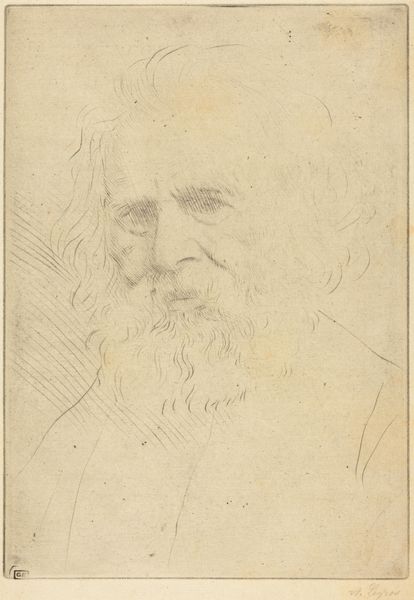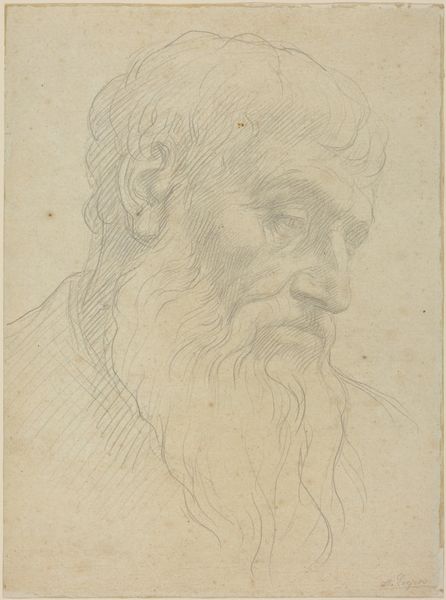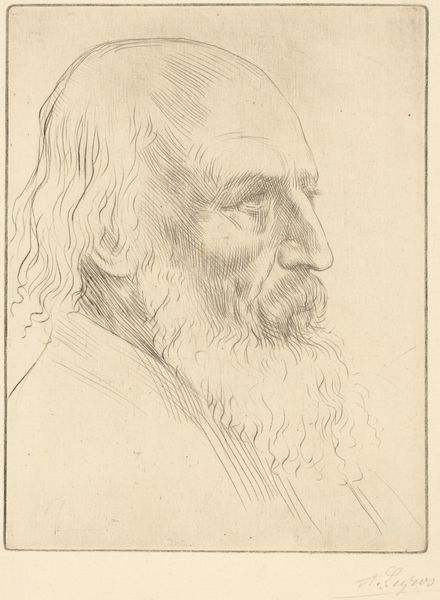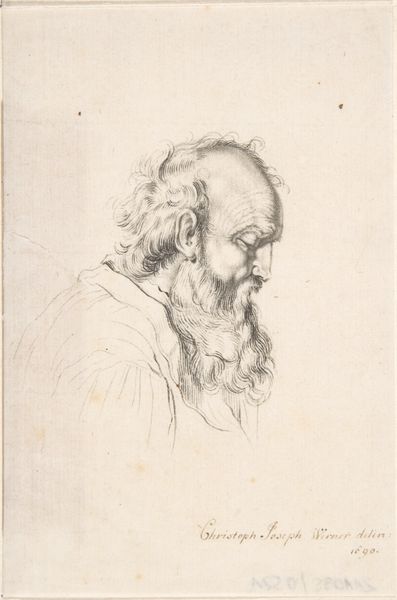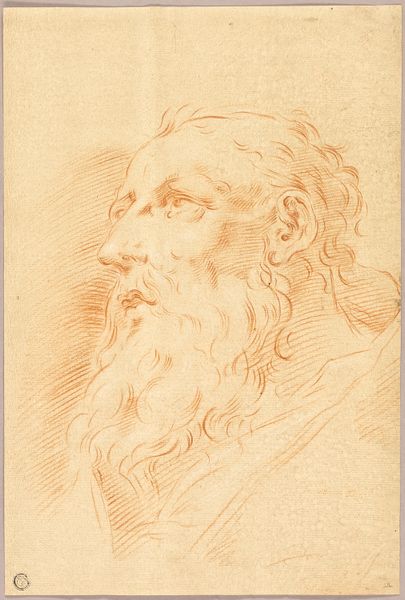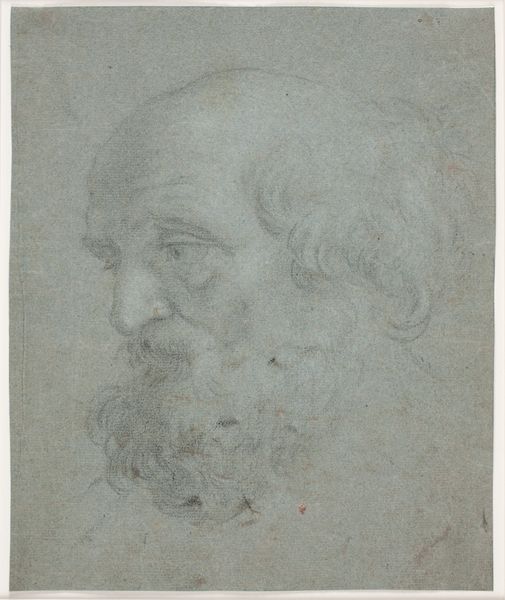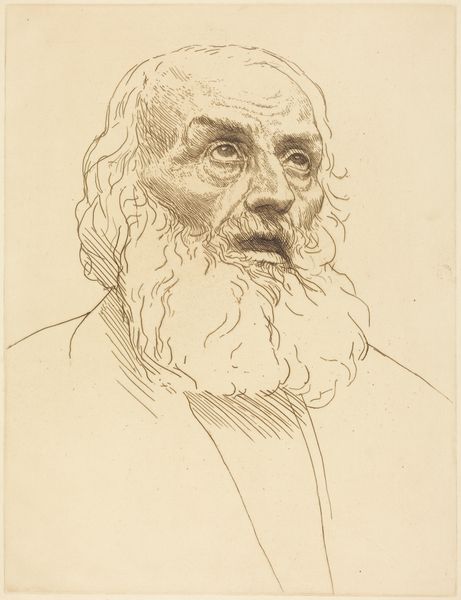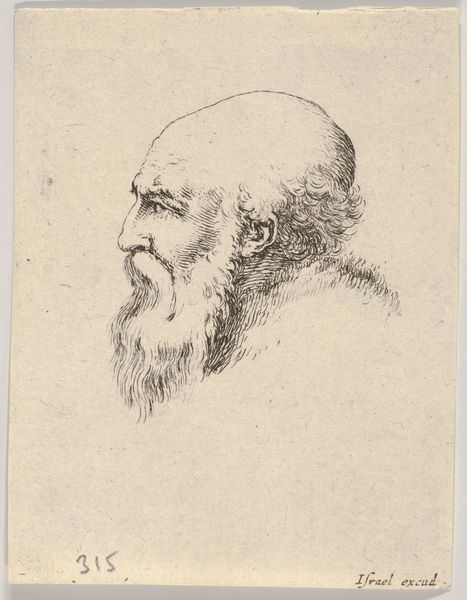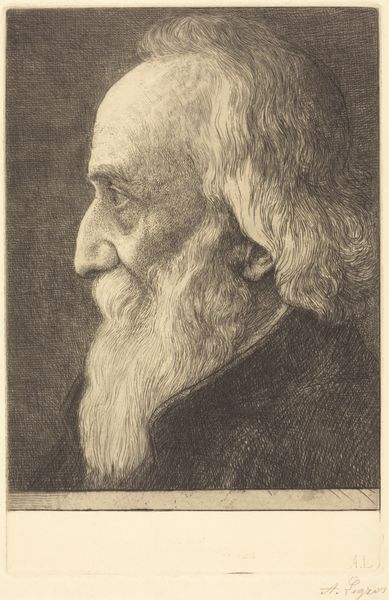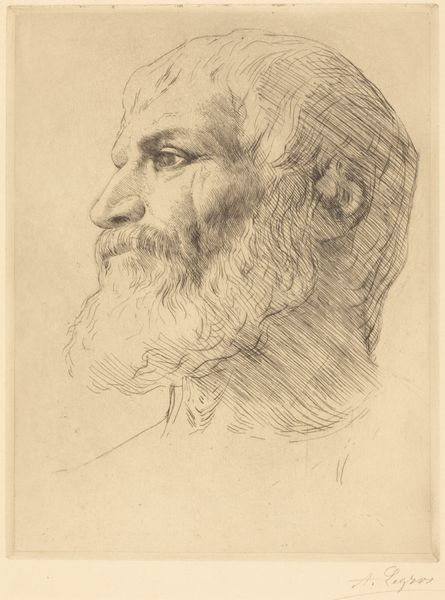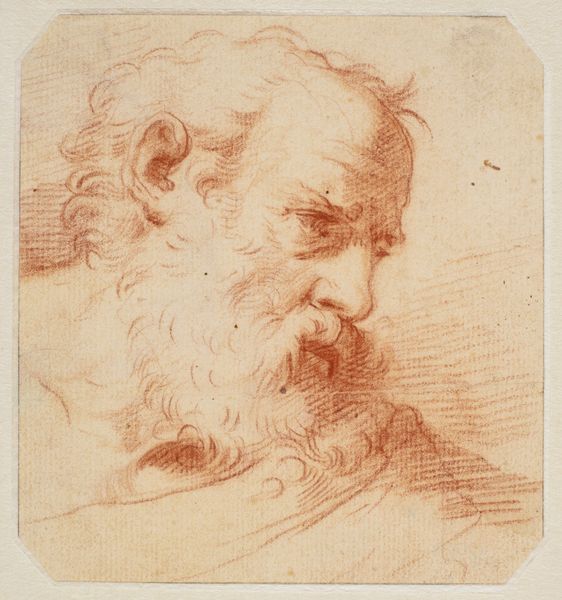
print, etching, engraving
#
portrait
#
self-portrait
# print
#
etching
#
line
#
portrait drawing
#
engraving
#
realism
Copyright: National Gallery of Art: CC0 1.0
Editor: We are looking at "Self-Portrait, 12th plate," a print by Alphonse Legros. The sharp lines created through etching are quite striking! What captivates you about this piece? Curator: Ah, Legros! He's always drawing us in, isn't he? The intimacy is the first thing I notice, a man rendered by his own hand. You get this sense of peering into the artist's very soul, catching him unawares, perhaps even vulnerable. See how he's avoided flattering detail, laying bare the passage of time on his face? Almost like he is showing us how to 'etch' ourselves. Editor: Etch ourselves... that's interesting! The cross-hatching does create so much depth. Did self-portraits hold a particular significance at the time? Curator: Absolutely. In some ways, they became a radical act. The artist taking control of their image. It's an assertion of identity, "I am here, this is how I see myself", not some grand pronouncement crafted by a royal painter. Also the fact that Legros chose printmaking-- such a democratic medium -- says that he really intended to communicate with a broad audience. What does it say to you, this bare, etched soul? Editor: I appreciate the honesty in his gaze. It feels as though Legros invites us to reflect on our own imperfections, etched through our individual passage through time. The texture really gives it such personality. Curator: Precisely! Art holds up a mirror not just to the artist, but to all of us, dear. We all have etchings, the story on our faces of joy, grief, hope and wonder, that give beauty to a person's real self.
Comments
No comments
Be the first to comment and join the conversation on the ultimate creative platform.
